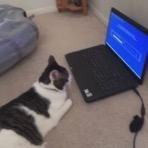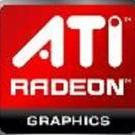Search the Community
Showing results for tags 'dell'.
-
Hiya fellas, does someone know what to do? You all have a big experience with CCFL driven backlights. Is it the lamps worn out? It was fine until today, I tried another GPU, all the same.
- 11 replies
-
Dell Dimension 2400 Specs.txt I am trying to install windows 98 SE on my DD 2400 (specs listed above) i can get everything to work except the GPU (Onboard GPU works if there is no PCI GPU card Installed at all) the cards ive tested were "GeForce2 MX 400 64MB PCI" and "GeForce4 MX 4000 128MB PCI" occasionally id get a "windows protection error" after messing around with Resources / conflicted I/O in device manager then installing the Nvidia driver (version 82.69 unofficial) ive even tried 81.98 (official) still no luck Current PCI GPU: EVGA Nvidia GeForce 6200 PCI 256MB DDR2 any suggestions??
-
Good evening! I own a Dell Dimension 4100, and many of you may already be familiar with Dell's genius inclusion of an additional auxiliary 6-pin psu connector alongside the standard ATX 20-pin, severely limiting psu upgrade options - if any at all. I just received an "AUX Motherboard AUX ATX 6 20-Pin to Dell ATX 20-Pin & AUX 6-Pin Cable" from Ebay, as the original listing put it. Lo' and behold, the aux connector is keyed slightly differently on the side from my motherboard. I certainly hope this doesn't mean that it's completely incompatible, as in a different wiring layout on it requiring electronics skills I don't have😂. If it is, is there a chance I could find an adapter that does fit? Or is it as simple as clipping the bits of plastic off blocking the connector? I can provide pictures if need be.
-
I tried to install Windows Gusta with pre-installed ACHI, NVMe (even the Windows folder locates at HDD), USB 3.0 drivers in instal.wim, GPT/UEFI configuration Even Windows PE can't load properly, shows the same thing The only thing I saw is bugged and duplicated load screen "XP style" after reloading System configuration: Laptop Dell Intel Core I7-9750H NVIDIA Geforce GTX 1660Ti 32 GB RAM The Laptop doesn't allows me to turn off even Intel UHD 630, I think there could be problem, I want to instal NVIDIA drivers due to existance drivers for Win7 What shall I do?
- 3 replies
-
- install problem
- install Vista
-
(and 2 more)
Tagged with:
-
https://www.dell.com/community/Desktops-General-Read-Only/Dimension-8200-Bios-A09-Hyperthreading/td-p/466727 Hello, I have a Dell Dimension 8200 with a Pentium 4, 3.06 Ghz, 1.5 GB RAM, and a Geforce 6200. The Bios on this computer is A09, however, this version of the bios doesn't support hyper-threading, an older version of it did (Dell took down the hyper-threading bios soon after the release). On the link above, users mention a place I could find the bios at, but they didn't post a link, and just refer to the site as "Spongebob's website." Does anyone know where I could reach this site, or does anyone know of another way I could get this bios? -thanks
-
Hello, all. I am trying to get the audio working on a Dell Optiplex 170L (865 chipset) with Windows 98 SE. I have all of the other drivers installed, the video was a little tricky, but i got it eventually. Here is the information from the Unknown Devices utility. Thanks for any help... really don't want to use a PCI sound card if i don't have to. P.S. On the dell forum a long time ago some guy said He got it working, but didn't state how.
-
Small SSDs are so cheap I thought one would be an interesting upgrade on my 'daily driver xp sp3 Dell 530s. Not so ... The machine is SATA so this should be plug/play ... right? Nope ... BIOS (up to date) detects the drive correctly. FDISK finds three partitions 1 & 3 are small, non-DOS. 2 is most of the drive, DOS. Reallocate to one primary DOS partition, FAT-32. (Like my real HDD for this machine.) Formats fine. Start to load XP from CD, it goes through the loading of files, etc. then crashes as soon as it touches the disk. "SESSION3" and a lot more stuff. The long code begins 0X20006F and the rest is 0X000000. The error message can be found with a web search but basically tells you what the text on the screen says "Something is wrong with your hardware. Take out any device you just installed and try again." Self explanatory but taking out my new drive isn't actually a solution to the problem of installing a new drive. More data to further confuse the picture. 1. I installed XP successfully using a Dell Dimension 2400. It runs FINE on that machine. I installed it on a total of five SSDs: Three were 2Gb ones -- too small for any more than a demo, but useful for that, I thought. The FIRST one of those actually came up fine on the 530s -- but I have mislaid that one. (Dummy ...) I also installed it on a couple of 16 Gb ssd's with the same (failure) result. All but one of the 16's were APACER, the odd one was SANYO, I believe. 2. For the fun of it I tried booting up one of the 2 Gb drives without doing anything to it: It came up, displayed an XP black screen, then went to a Windows Embedded logo, and finally to a hospital logon screen, which -- since I have no password -- was the end of the line. And probably wouldn't have gone anywhere interesting anyhow since it knew nothing of my keyboard or mouse. But what this says is that there's nothing inherently wrong with either the drives OR the Dell 530s. I have looked pretty broadly for more ideas, others who might have had this problem, etc., but no luck. Since the XP install causes an upchuck on the 530s I can do nothing more there. I can try to install the Dell 530 drivers on the SSD system running on the 2400: Often you can get away with that and at least the chipset and IDE ones might make a difference. Anyone got any more ideas? I've gotten more good advice on MSFN than all the rest together, so I thought it worth trying ... THANKS!
- 18 replies
-
- ssd
- solid state
-
(and 2 more)
Tagged with:
-
Some people have favorite software that doesn't run under later OSs; others just like being out of the mainstream. Dell 2400s are often $25 on local BB's, even FREE at dumpsites and from friends. With CPU speeds 2.4-2.8 gHz or so and hard drives of at least several gigs they're potentially super performers with 98SE. Realism is important -- '98SE CANNOT replace a general Win XP or later system -- but it's possible to have a very fast reliable way to run 95/98 software with necessary tools (Firefox ...) to support it. The same probably is true of other make machines with chipsets supported by Intel for Win 98 but not by the maker and most of what follows would also apply to them. I would, however, avoid HP: They've made every effort to vacuum up all support for machines over a week old and unless you find one new in the box with a restore disk, probably not worth picking up off the curb. I spent dozens of hours searching for answers to problems on my '98SE Dell 2400 project. There's some excellent info out there but nothing like a complete story; this topic is the result. Because Dell never supported this machine with Win 98 (so some drivers must come from elsewhere), AND '98 is famously buggy, AND '98 native USB support is ElSucko, AND the PC architecture was changing during this time there's more to this install than I thought when I started but only finding the right road is hard. Here's the -- hopefully -- direct route. OVERVIEW -- Get the machine, check hardware out update BIOS and set options. Download software -- links provided. Do a full fresh Win 98SE install. Update USB support. Update Win 98SE. Install software as needed. DETAILS -- You will need: -- A Dell 2400. Win 98 may hang on start (claiming not enough memory to start Windows) if over 768M is installed so pull memory if necessary. I think the minimum is 64M but get as near 768M as you can. This machine needs a way to get the file needed to make USB mass storage support work. Probably the easiest thing is a 3-1/2" floppy drive. If it doesn't have one you can temporarily steal a drive from another machine: TEST FIRST. Dead floppy drives nearly always respond to careful vacuuming/brushing with the top off and a gentle Q-tip swabbing of the heads. There's a socket on your MOBO for the floppy cable, even if no drive is installed. You don't have to install this in a tray; just hook it up and set it where it won't touch anything while you do the rest of the job. -- If you want 'net access, then a modem card, a cable to go to your Ethernet connection, or (if wireless) a wireless adapter that supports Win 98SE. There are MANY WLAN options now and they're cheap. -- Any specialized device(s) such as a game card. Note that game cards often have some combination of audio, joystick, AND dial up modem built in: Since this will affect what other devices and drivers you need, I'd get this in hand WITH THE APPROPRIATE DRIVERS, right at the start. -- A floppy disk and a USB flash drive with most of a gig of space. -- A Microsoft Win 98SE 'full install' disk. -- Another machine for downloading stuff from the 'net. Start by downloading these items: *** AUTOPATCHER here: http://www.softpedia.com/get/System/OS-Enhancements/Auto-patcher-for-Windows-98SE.shtml That's close to 280 MB of needed MS fixes: Wait'll you see what all is in there. *** NUSB 3.6e (USB upgrade to make it work on Win 98), here: http://www.tmeeco.eu/Fileden/nusb36e.exe Or (in case of link rot on that) you could use NUSB 3.3 which will get you going. http://www.technical-assistance.co.uk/kb/win98se-usb-mass-storage-drivers.php *** Intel chipset ID utility here: https://downloadcenter.intel.com/Detail_Desc.aspx?agr=Y&DwnldID=8264〈=eng&wapkw=chipset+identification *** Dell chipset driver here: http://downloads.dell.com/Pages/Drivers/dimension-2400.html#Chipset%20-%20Driver THAT is the one I used: While Dell says 'only 2000 and XP,' when you look in the file it also says 98SE. THIS seems to be more recent. https://downloadcenter.intel.com/confirm.aspx?httpDown=http://downloadmirror.intel.com/8178/eng/infinst_enu.exe〈=eng&Dwnldid=8178 *** Intel 82845 graphics adapter driver here: https://downloadcenter.intel.com/confirm.aspx?httpDown=http://downloadmirror.intel.com/7005/a08/win9x1361.exe〈=eng&Dwnldid=7005 *** Sound and Ethernet driver below, unless you'll get it from an add-in card. It's probably easiest to install everything else first: Since this chip does all kinds of back end I/O stuff, once you install these files Win will nag you every time you bring the system up about actually INSTALLING those drivers, but obeying will complicate installing what you really do want. http://www.broadcom.com/support/ethernet_nic/4401.php *** Driver(s) for your Internet connection and any other devices. http://drivers.softpedia.com/get/NETWORK-CARD/OTHER-NETWORK-CARDS/Linksys-WMP11-V27-Driver-38280.shtml *** I recommend getting Desktop Restore, here: http://midiox.com/desktoprestore.htm so you can de-scramble your icons after Windows punishes you for the sin of using Microsoft products before they're 100% debugged. You want the DESREX.EXE file for this project. The other Win 98 version there (uses MSI) did not work for me. *** If you will use 'net access at all, download FireFox 2.0.0.20 which is the last version for Win98 and works well on simpler sites, though not on the most modern ones. But you can see text at least on most 'blank' sites by clicking View->Page style->No style. http://www.oldapps.com/firefox.php?old_firefox=7&ModPagespeed=noscript Many later versions of FireFox claim to support earlier systems but they do it by packaging 2.0.0.20 with all the later stuff ... If you just want a reliable web browser for the very simplest jobs, go with 2.0.0.20: It will work without tricks when it works at all. Later versions can be installed, will display more pages correctly and many add-ons work but won't have a working default browser feature, password saving, bookmarks, or any of that. There isn't a best post-2.0.0.20 Firefox for 98SE.3.5.19 is the last to use Java Classic, 3.6.x is considered stable (but no JAVA on '98), 8.0.1 worked well for me. Some people have gotten 10.0.12ESR (Extended support release) to work. All are available at 'oldapps.' The various FF versions are discussed here: http://kernelex.sourceforge.net/wiki/Mozilla_Firefox To try Firefox after 2.0.0.20,download KernelEx from that link. The last version was 4.5.2 and that's what you want. This simulates many WinXP interfaces for XP-only packages and will allow much (not all) XP software such as some post 2.0.0.20 FF versions to run. There's also a unicode module there that you'll need. Put all that on your USB flash drive, making a backup copy on the 'other machine' HD in case of flash trash later on. *** ALSO PUT NUSB36E.exe (or NUSB33E.exe) on your floppy disk. -- You'll need at least 6 hours of time, some patience. But anyone 'doing' obsolete computers already knows that. ====================================================================== STEP-BY-STEP: 1. Get the new-old machine going with whatever system it has and do a full scandisk (etc.) including a surface scan of the C drive. There's much to be said for putting some hours usage on a 'new' junk machine to smoke out MOBO and similar fatal issues before investing your time in software installation. (Yes, some machines people throw away are actually dead ... who knew?) Confirm that you have the A05 (latest) BIOS version; if not, go here: http://downloads.dell.com/Pages/Drivers/dimension-2400.html#BIOS to download and install the update flash. Once you have the latest BIOS, enter SETUP (F2 while starting) and click Integrated Devices (legacy ...). Turn OFF 'USB Emulation.' (Leave 'USB Controller' ON.) If emulation is on, you'll have two levels of OS trying to figure out what USB device(s) you have, it may take an hour to get the machine up, and there's a chance for two views of the same device and if you somehow write to both ... Use the Intel chipset ID utility to determine what you have. Most likely that'll be an Intel 82801 chipset and 82845G/GM/GV (...) graphics controller. 2. Format the C drive. NO, DO NOT try to save what's on it by not doing a format. With a different OS, a different 'home' machine, and perhaps other changes, anything you carry over without a reinstall is likely to bring cooties that will cause you no end of trouble. Plus the disk can't be defragged in the way a fresh install will be. 3. Boot from your Win 98 install CD, but DO NOT allow it to start the install. Instead, get a command line prompt and enter: SETUP /p i (that's pee eye ...) That switch is CRITICAL. The 90's were when Microsoft and others were figuring out how to make things automatic: PnP devices, ACPI (Advanced Configuration and Power Interface), and so on. A LOT of this stuff didn't work reliably and going back now with generic (not specific-to-Dell) Intel drivers and who knows what flavor of a Dell system to get Win 98 going can be, well, a week long nightmare if you let the robots play. Go ahead, ask how I know that. Robots have no sense of humor and do not give a d***. In particular the Intel graphic controller driver has IRQ conflicts caused by IRQ steering AND it has memory resource conflicts caused by ACPI. The SETUP command above (with /p i) tells '98 that your machine is too dumb to do that automation; it has to operate as if on a PC of the non-automated generation. Others who tried using third party video have reported the same problems with other makes. Just KILL ACPI at the start. This works FINE: How many strange devices will you plug and unplug in an average YEAR on this machine? And Win 98SE actually does well, discovering and installing them the old (software) way on a machine where a drunken robot isn't lurching about. Proceed with the WIN 98 install. It'll be the fastest one you ever saw. Depending on the make and model of your USB flash drive (and perhaps the phase of the moon) you MAY have working USB support; if so, you won't need the floppy. HOWEVER I've put Win 98SE on several old machines and never seen the built-in support really work, so probably you should: 4. Put in your floppy disk and double click NUSB36E. READ THE BRIEF EULA AS THE DIRECTIONS ARE THERE. They are simple, but you MUST follow them. In particular, note that you must first clean out all the Win-installed USB stuff AND THAT two reboots are necessary after the EXE finishes. EXCEPTIONS: You don't need to remove anything with 82801 in it (in Device Manager): These are real Intel chipset drivers packaged by Microsoft, NUSB won't improve them, and they can be left alone. You don't need to remove all the PCI unknown devices -- only any USB unknowns. 5. Insert your flash drive. Go to System - Device Manager and look at what you've got. Expand the USB device class at the bottom and look for a USB Mass Storage device. If you have that then open Windows Explorer: With NUSB 3.6 you should have a new drive letter (perhaps E) for your flash drive and you are good to go. If using NUSB 3.3 you probably have a bogus disk drive: Delete it. I donno why but after the NUSB 3.3 USB setup works the first time it'll keep on working. NUSB 3.6 fixed this. WHAT YOU GET from 'NUSB' is working USB support for mass storage devices. It IS NOT all-purpose USB support for printers, scanners, etc. If you want to better understand the USB issue and NUSB's fix for it, the fifty-some page discussion HERE: http://www.msfn.org/board/topic/43605-maximus-decim-native-usb-drivers/?page=1 is literally invaluable. Time again to thank M-D who created NUSB and wrote much of the discussion, also several others whose detailed knowledge and patience made my project possible. Time to start with the software on your (newly working) USB flash drive. 6. Double click the AUTOPATCH download file. This installs the AUTOPATCH software and gives you an icon -- it does NO patching. STOP the flash drive and TAKE IT OUT. 7. Double click the new AUTOPATCH icon and watch it go. For the next 45 minutes or so it will install all kinds of fixes and essential basic software, looping through installing and restarting a dozen or more times. This is one of the very slickest packages I've ever seen and when it finishes, you'll have about the most up-to-date fresh install of Win 98SE that's possible. No kidding, this does over a hundred installs and while there are a couple of error messages, the thing seems to clean them up later on. I do recommend watching it, though: That's an awful lot of work to be allowed to happen in a closet. 8. NOW uninstall any generic graphic controller and install the Intel graphic controller by double clicking: WIN9X1361.EXE When you get the system back up you should have a new brightly colored icon at the lower right and Device Manager should say that your graphics adapter is Intel AND that the device is working properly -- no ugly yellow stuff. You can go to Display - Settings and set whatever your monitor is capable of, from the choices offered. At this point I'd install Desktop Resetter. While this will likely be the most stable Win 98SE you've seen, Win 98 punishes any slight passage of gas by scrambling your icons and DESREX gives you two additional choices when you right-click the desktop: Save Desktop and Restore Desktop. You still have a couple of uninstalled PCI devices -- Eithernet and sound -- but what (if anything) to do about them depends on what you want and they cause no trouble. You're on your own for the rest -- Internet access, your own software, whatever. If you will use the 'net, now's the time to install Firefox. 2.0.0.20 is basic, a quick install, and will work correctly under 98 SE on many sites, it's the minimum. If you need more sites, add-ons, etc. then also install a later (XP-dependent) version. For post-FF 2.0.0.20 start by installing the unicode module linked on the KernelEx download page, then KernelEx itself. There are no instructions: Just double click the d/l's in turn. Then go ahead and install the later Firefox. -- If you need Java, go with 3.5.19 or earlier. 3.6.28 is considered a good stable FF. Some people have gotten 10.0.23 to work but I could not. -- If your post-2.0 FF hangs, try disabling crash reporting and auto-updating. Can also try right clicking the FF icon and under 'properties kernelex' select Win 2000 rather than 'default' which is Win XP. This has worked for some people but not for me. -- If you get garbage characters displayed in some places go to Options->Content->Fonts & colors->Advanced and UNCHECK 'Allow pages to choose their own fonts.' There are obsolete fonts out there that won't display correctly. I installed FF 2.0.0.20 using defaults. Then I said 'custom install' and put 8.0.1 in a separate folder. I renamed both desktop icons including the version number. I can start FF 2 for a smoothly working browser that allows bookmarks, 'default browser' status and more but won't display all sites. Or I can start FF 8 and see most all web sites except those that display using Java but lose bookmarking, etc. Gee, less than twelve years after support ended, Win 98SE is maturing nicely. Comments -- especially corrections! -- welcome!
-
I am interested in running some older OSes. Particularly, Windows 98/ME. Would these specs work out? And if they don't what could I run? It's a Dell Optiplex 780: Core 2 Duo 2.93GHz 8GB RAM Dell 03NVJ6 Motherboard Intel Q45/Q43 Express Chipset A 250GB SATA HDD (with legacy options) SoundMAX Integrated HD Audio (if this is for the integrated speaker and the headphone jack will still work, I don't need it) And a Belkin USB Wireless Adapter (fine if i can't use it)
-
It is an old Dell Latitude D630 with 2GHz Core 2 Duo, 2GB ram, 80GB HDD. All I want is to run some games, Firefox, Office 07, and some older virtualization programs like VMWare 10.
-
How would ME work on this Latitude? Tried earlier with KernelEx 4.5.2 but no driver would install. The ones essential to me are: Intel GM965 Chipset Sigmatel STAC 92XX C-Major HD Audio Dell Wireless 1390 Video drivers
-
I have a Dell Dimension E510 desktop from around 2006-ish. It has an Intel 945G chipset and a 82801 controller hub, a 2.6 GHz Pentium D processor, and 2 GB of RAM. I have compatible PCI cards for the graphics, sound, and network, and I can downgrade the RAM to 1 GB by removing one of the modules. I'm just wondering if there are Windows 98 drivers for the motherboard, and if anyone else has had luck with Windows 9x on 945G motherboards. I tried searching for the drivers on Intel's website, but I keep getting dead links.
- 3 replies
-
- Windows 98
- hardware
-
(and 1 more)
Tagged with:






